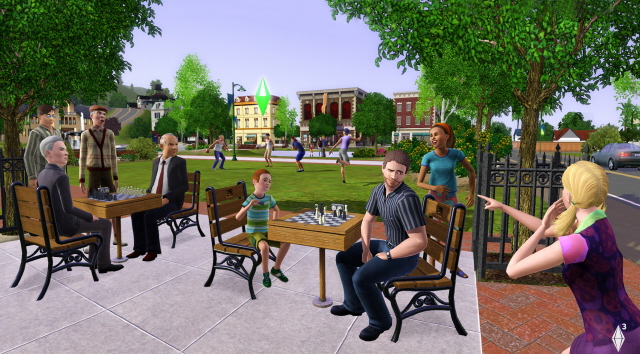 With over 100 million copies sold across the globe, The Sims is more than a game franchise for Electronic Arts. It’s an entire division, or a studio label in EA parlance. It’s been five years since The Sims 2 brought 3D to these games. In February, EA’s Maxis studio will release The Sims 3 on the PC. The new game features improved graphics and an entire town called Pleasant Valley, but the heart of The Sims 3 is in creating the souls of these virtual characters. Players can choose from dozens of character traits to assign each of the town’s 90-plus Sims with unique personalities. Ben Bell, executive producer of The Sims 3, took some time away from Pleasant Valley to talk about the new game.
With over 100 million copies sold across the globe, The Sims is more than a game franchise for Electronic Arts. It’s an entire division, or a studio label in EA parlance. It’s been five years since The Sims 2 brought 3D to these games. In February, EA’s Maxis studio will release The Sims 3 on the PC. The new game features improved graphics and an entire town called Pleasant Valley, but the heart of The Sims 3 is in creating the souls of these virtual characters. Players can choose from dozens of character traits to assign each of the town’s 90-plus Sims with unique personalities. Ben Bell, executive producer of The Sims 3, took some time away from Pleasant Valley to talk about the new game.
VB: What role has direct player feedback had in crafting The Sims 3?
BB: We’re all fans of The Sims, and a lot of our team worked on The Sims and The Sims 2, so player feedback is built into our team. We also spend a lot of time interacting with members of The Sims community around the world. I don’t think the game would be what it is without The Sims community. They make the content that keeps the game alive, and we are going to amplify that activity with The Sims 3.
 VB: How do you go about crafting the PC Sims 3 experience in comparison to the console and portable games and spin-offs?
VB: How do you go about crafting the PC Sims 3 experience in comparison to the console and portable games and spin-offs?
BB: The Sims 3 is a completely new game. We’ve been working on it for a few years now, independently of any other project. Expansion Packs typically explore one aspect of life. They go really deep, but not broad. Our console and handheld games are similar. In The Sims 3, we’re rewriting the rules of life. It’s a much bigger challenge.
 VB: With The Sims 2, the graphics overhaul and introduction of 3D gameplay was a huge step in the franchise. What role do the visuals play in this game?
VB: With The Sims 2, the graphics overhaul and introduction of 3D gameplay was a huge step in the franchise. What role do the visuals play in this game?
BB: The first thing that people will notice about The Sims 3 is the world around them. If you see it, you can go there. In the past, The Sims players were confined to playing on little levels that we called lots. Now there are now boundaries. The technology is incredible because we can show you the tiniest detail of your home, like the petals on a flower. A few seconds later you can look at the tiniest freckle on a Sim on the other side of town. This all happens in real time.
VB: How has the advancement of technology over the past five years helped you with The Sims 3?
BB: We’re in a great place as developers these days: Realism has been achieved. We can just focus on style and delivering seamless experiences so that the player can be completely immersed in their story. We’re going to give the player unprecedented control over the visuals in the game so that they have the same control that our artists have, right in the game. The new Create-A-Sim allows players to make just about any person they can imagine, and there are tools in the game that let you change the look of almost any surface on your Sim or in their home.
 VB: What impact has the development cycle for Spore had on the creation of The Sims 3? Were there specific gameplay elements applied to The Sims 3 based on the direction of Spore?
VB: What impact has the development cycle for Spore had on the creation of The Sims 3? Were there specific gameplay elements applied to The Sims 3 based on the direction of Spore?
BB: As developers, we’re always looking out for inspiration. Spore was definitely on our radar because they also let players create and share content, but I don’t think that anything specific carried over. If you ask any fan, or anyone who has played The Sims, they’ll tell you that creating and sharing is at the heart of The Sims experience. We want to make it better and easier.


